









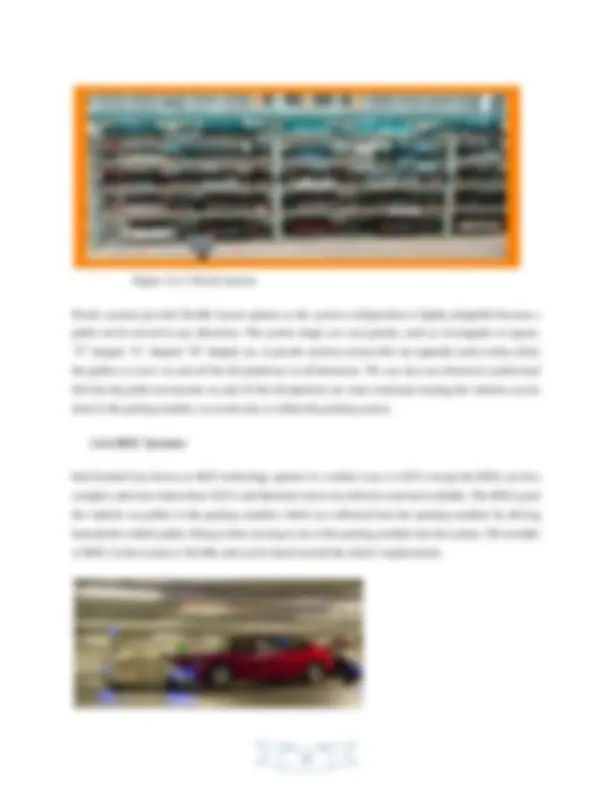
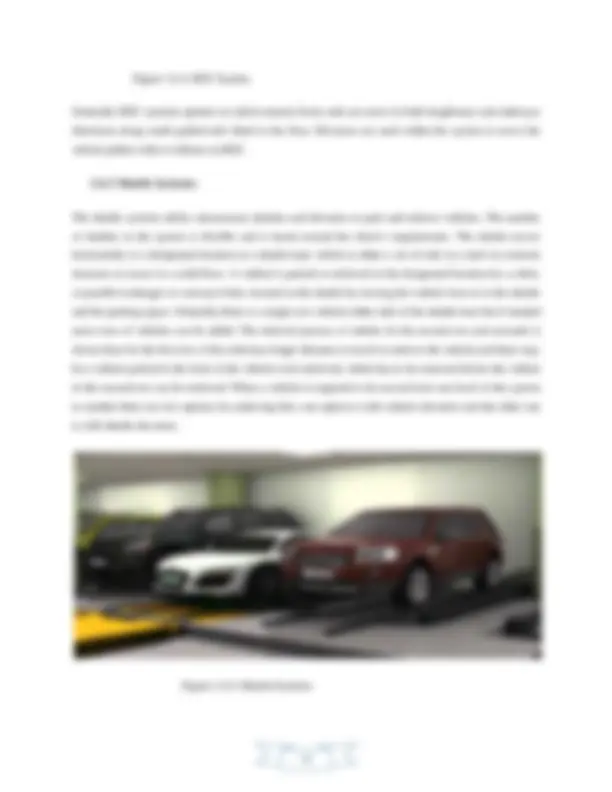
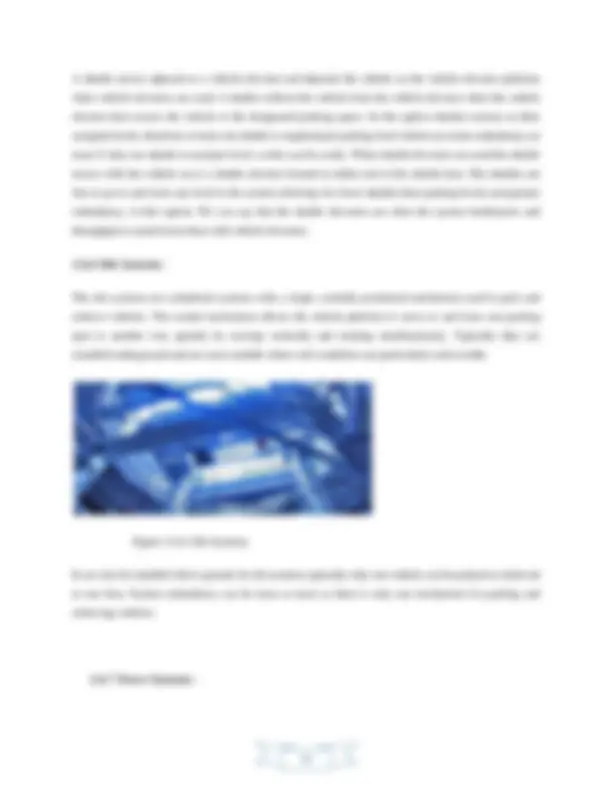
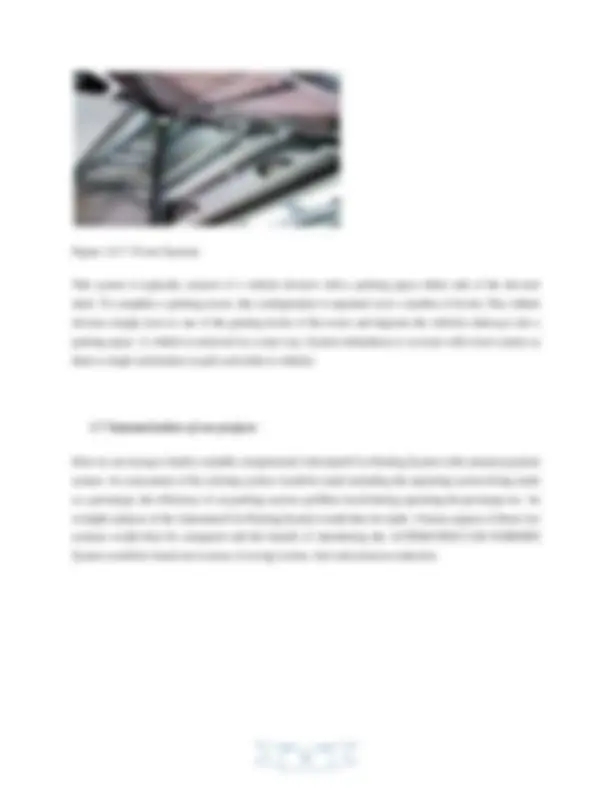


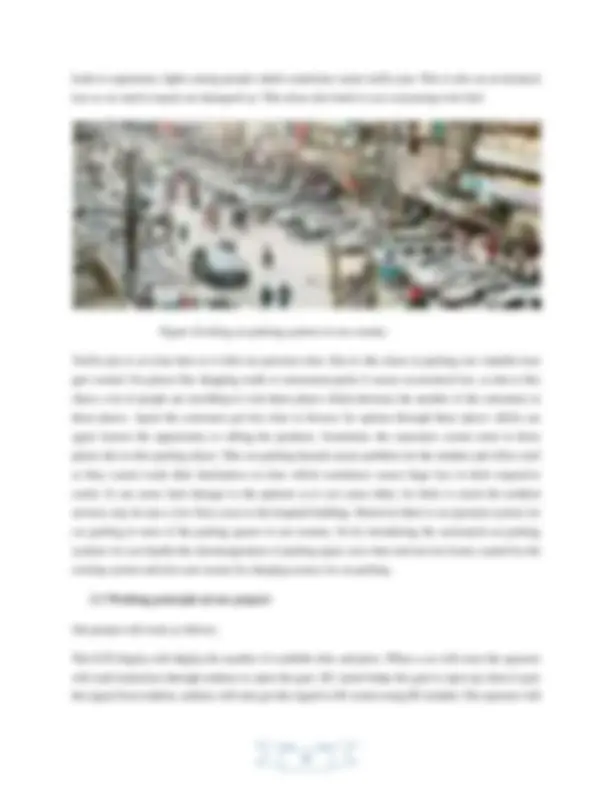


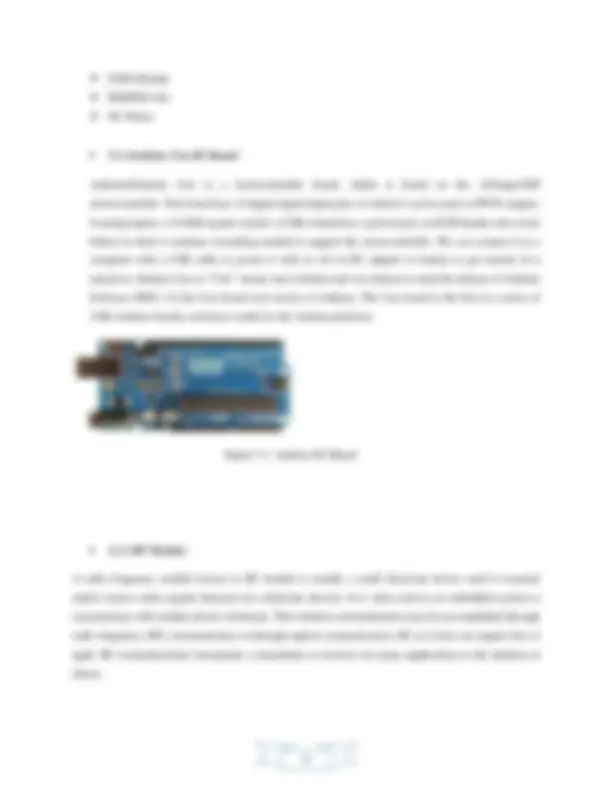



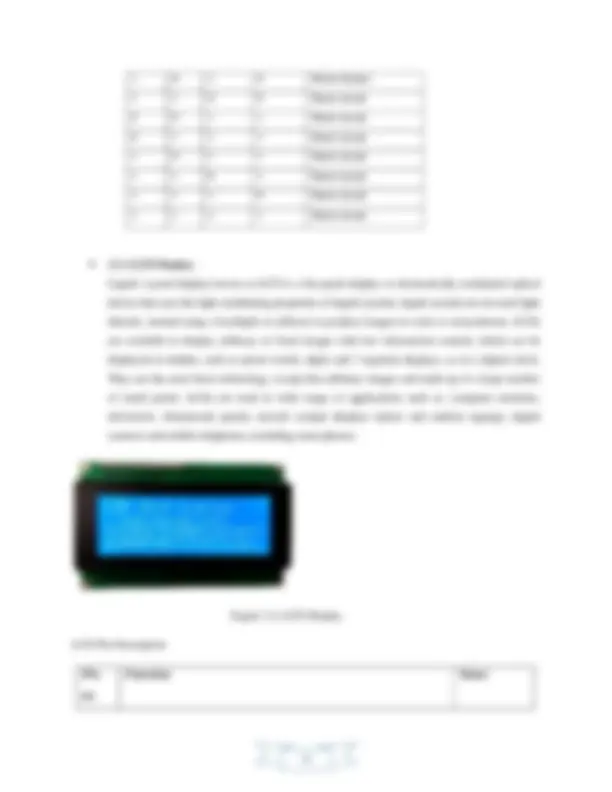

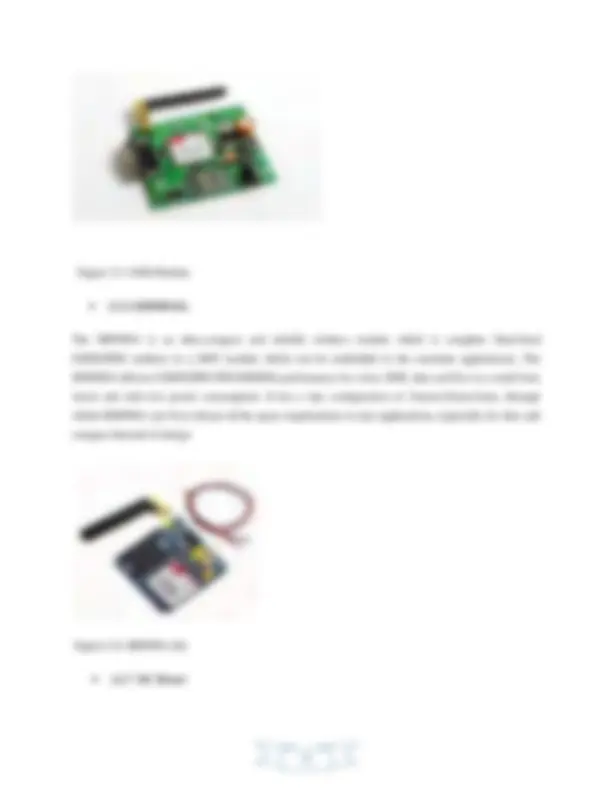
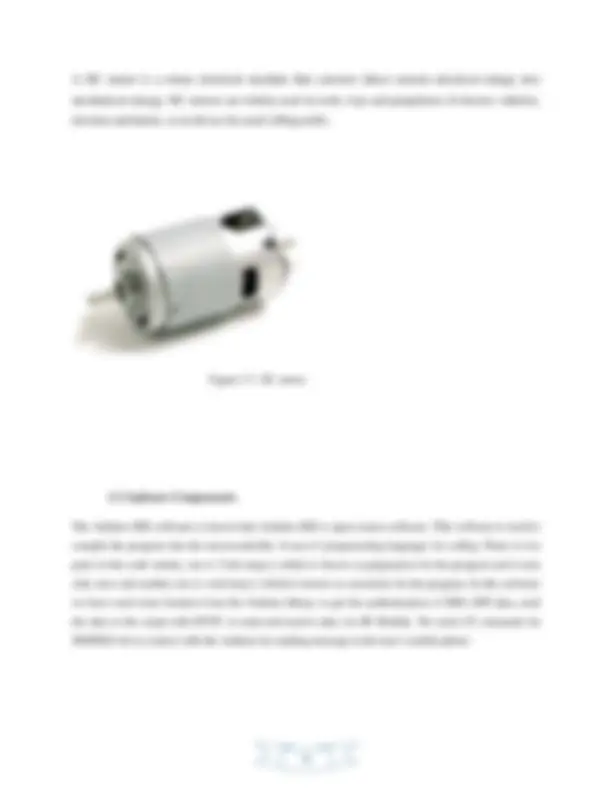


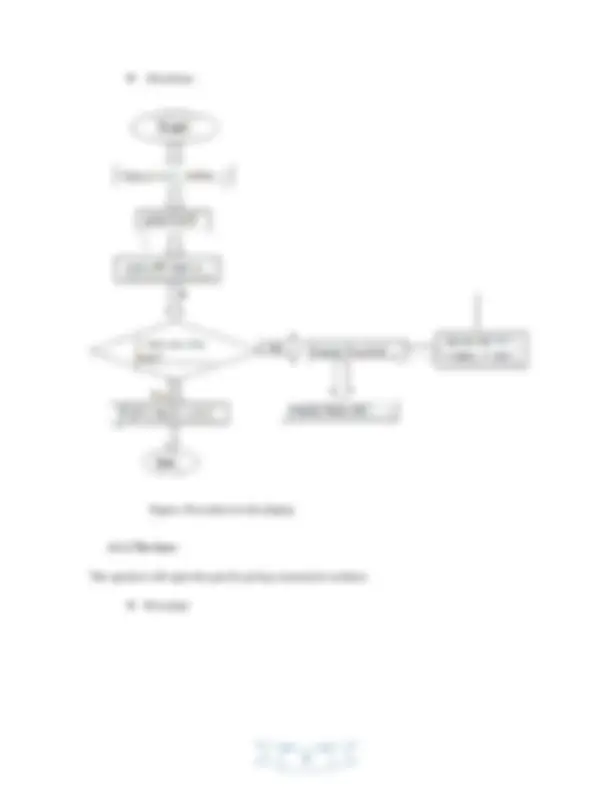
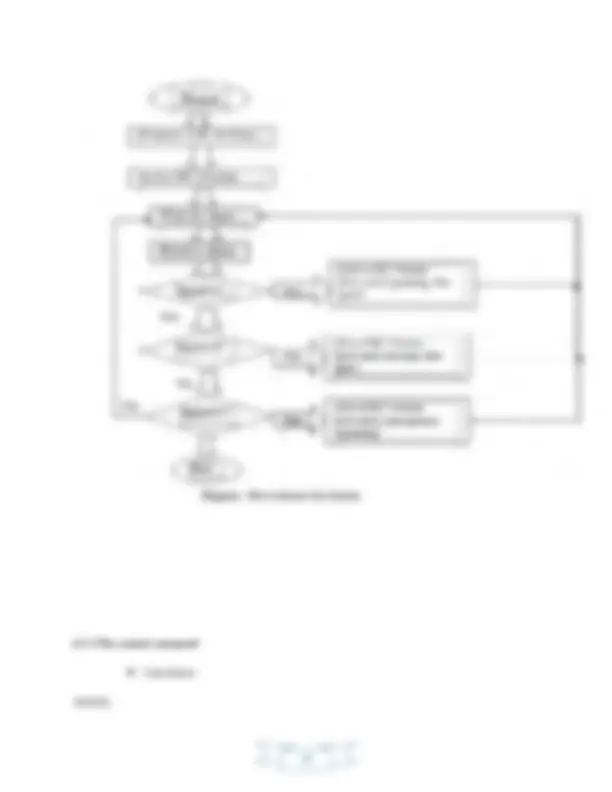
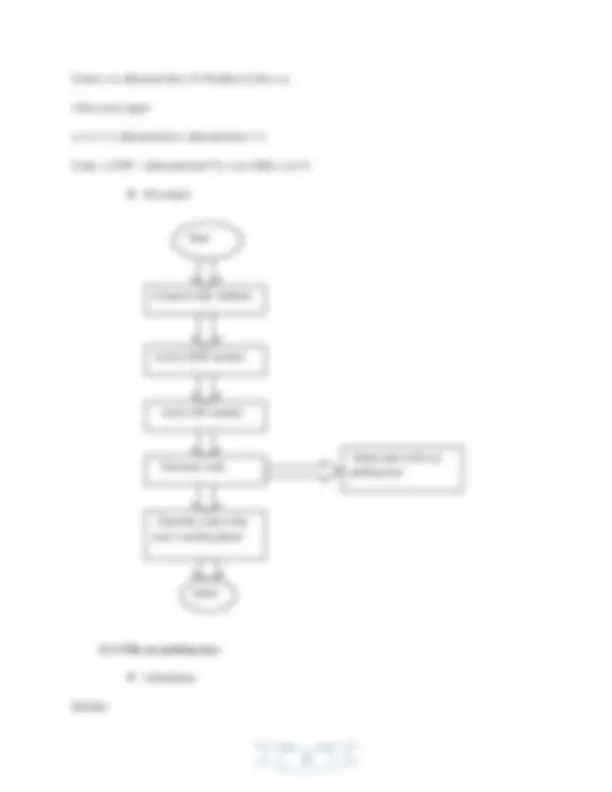
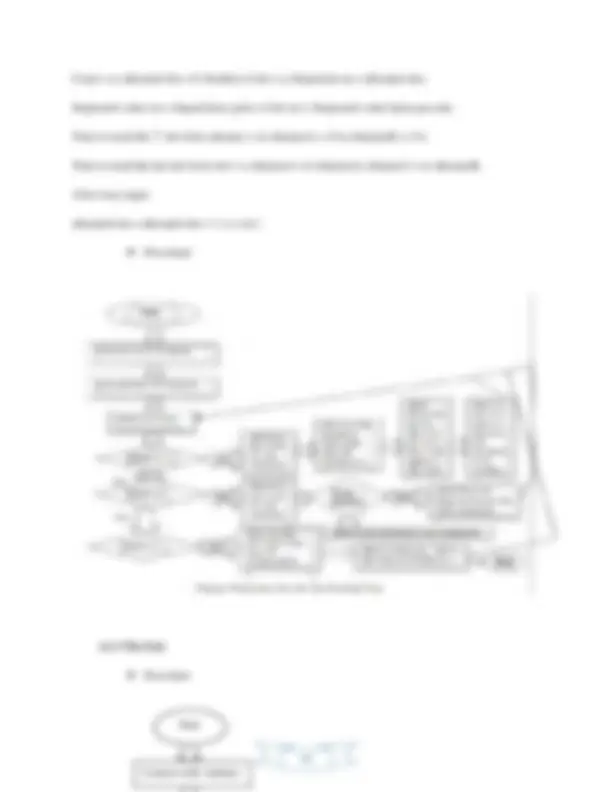






































Study with the several resources on Docsity

Earn points by helping other students or get them with a premium plan


Prepare for your exams
Study with the several resources on Docsity

Earn points to download
Earn points by helping other students or get them with a premium plan
Community
Ask the community for help and clear up your study doubts
Discover the best universities in your country according to Docsity users
Free resources
Download our free guides on studying techniques, anxiety management strategies, and thesis advice from Docsity tutors
Voice Controlled car works with bluetooth
Typology: Lecture notes
1 / 76

This page cannot be seen from the preview
Don't miss anything!





































































ABBRIVIATION:
Over the decades our country has been developed drastically, now we are in this state that we have a lot of well contacted roads, commercial building and increasing number of automobiles. While parking these automobiles in parking space we use the manual procedure of parking. Which most of the cases is unplanned and lack of discipline due to this, people can park their cars anywhere they want to, which creates a mess as people do not follow the particular cue most of the time. As a result of this, a huge traffic jam takes place in that place. While parking in and retrieving car due mismanagement cars can get dent by bumping with each other as there is lack of sufficient space. This leads to arguments, fights among people which sometimes makes huge traffic jam. This is also an economical loss as we need to repair our damaged car and also cars consumes extra fuel while parking in or out. Traffic jam is an issue here as it kills our precious time. Due to this chaos in parking our valuable time gets wasted. It harms the students, office going staffs and emergency patients to a great extent.
Traditional or manual car parking system is everywhere in our country but this system is full of problems. They are:
The advantages of automated car parking systems are:
1. Reducing traffic jam: Automated vehicle system reduce the traffic jam because here we are using a card system for paying the money, punching the card in the payment booth and one tray will place the vehicle in required place 2. Time saving: It is a time saving system. In manual parking system it is too hard to find out the empty space for parking, it is very much time consuming. Sometimes it causes latein meeting or other important works. 3. Safety in the parking: Here no people can enter in the parking so that there is no chance of snatching, robbery, stealing, sometimes in silent parking space peoples are being harassed. This system prevents these problems. 4. Fuel saving: In this system we are using an automatic tray which will take the vehicle into the parking space and place it in required slot. This will reduce the fuel cost. Here we do not need to lighting all over the parking space. It will on the light when it moves and where is the path and it is very much electricity saving also.
5. Operating cost saving: Over a period of time, the parking charge collecting cost is reduced. There is reduction in the man-hour required as the system does not require any human interaction for the money transaction.
The motivation of the project is, we want to digitalize our daily life as well as our country. In many countries this automated vehicle system is available and popular.
The objectives are:
Over the decades our country has been developed drastically, now we are in this state that we have a lot of well contacted roads, commercial building and increasing number of automobiles. With the increasing amount of roads and highways transportation has become the backbone of our day to day life.
Automated Guided Vehicle known as AGV technology has been introduced in automated parking system most recently though AGVs has been used in automated warehousing for decades. The vehicles are parked on pallets in the parking space which are collected from the parking entrance by the AGVs driving beneath the vehicle pallet, lifting it and then parking it in the parking space. The number of AVGs in the system is flexible and can be based around the client’s requirements. Generally AVG systems operate on solid finished concrete floors that can move in both lengthways and sideways directions along fixed paths and are able to rotate on the spot. This allows the vehicle pallets to be collected by an AGV from any direction and with several AGVs operating on a floor. It also allows for multiple, simultaneous parking and retrievalmovements along multiple paths. To move the vehicle pallets with or without an AGV, vehicle elevators are used within the system.
Figure 1.6.1: AVG Systems
This system is used utilizing a single mechanism that is to simultaneously perform the horizontal and vertical movements of the vehicle to be parked or retrieved in the parking system. This mechanism allows the vehicle platform to move to and from one parking spot to another very quickly. The crane mechanism has a vertical elevator platform fitted and it moves horizontally on rails, typically located on the floor and ceiling of the parking system, where vehicles to be parked and retrieved are placed, which means that a floor-to-ceiling opening in the center of the system is required for the crane for the crane(s) to operate.
Figure 1.6.2: Crane Systems
This mechanism can move in line with the normal direction of a vehicle or orthogonal to it depending on the site constraints. The crane system also has two cranes running parallel to one another should the site constraints allow it, if higher throughput or redundancy is required. The system redundancy is potentially low but back-up motors; switches, etc. can be installed to increase the system’s redundancy as there is typically only one mechanism for the parking and retrieval of vehicles and turning devices can be fitted under the vertical elevator platform.
Puzzle systems offer the densest form of automated parking as it utilizes around 95% of the floor area and often used in smaller systems. A grid of pallets covers a solid floor or steel frame, and each pallet is supported by a set of rollers and belts that are driven by motors fitted to the support frames underneath each pallet location in a horizontal puzzle system. Until the pallet with the required vehicle on is maneuvered to the desired location, the rollers and belts maneuver the pallets. The frames, supported by the pallets are installed in all possible parking positions. Typically there are two fewer pallets than support frames per floor that provides the necessary free spaces to maneuver the pallets.
Figure 1.6.4: RGC System
Generally RGC systems operate on solid concrete floors and can move in both lengthways and sideways directions along small guided rails fitted to the floor. Elevators are used within the system to move the vehicle pallets with or without an RGC.
The shuttle systems utilize autonomous shuttles and elevators to park and retrieve vehicles. The number of shuttles in the system is flexible and is based around the client’s requirements. The shuttle moves horizontally to a designated location in a shuttle lane, which is either a set of rails in a steel or concrete structure or recess in a solid floor. A vehicle is parked or retrieved at the designated location by a robot, or parallel exchanger or conveyor belts, located on the shuttle by moving the vehicle from or to the shuttle and the parking space. Generally there is a single row vehicle either side of the shuttle lane but if needed more rows of vehicles can be added. The retrieval process of vehicle for the second row and onwards is slower than for the first row of the robot has longer distance to travel to retrieve the vehicle and there may be a vehicle parked in the front of the vehicle to be retrieved, which has to be removed before the vehicle in the second row can be retrieved. When a vehicle is required to be moved from one level of the system to another there are two options for achieving this, one option is with vehicle elevators and the other one is with shuttle elevators.
Figure 1.6.5: Shuttle Systems
A shuttle moves adjacent to a vehicle elevator and deposits the vehicle on the vehicle elevator platform when vehicle elevators are used. A shuttle collects the vehicle from the vehicle elevator when the vehicle elevator then moves the vehicle to the designated parking space. In this option shuttles remain on their assigned levels, therefore at least one shuttle is required per parking level which can make redundancy an issue if only one shuttle is used per level, so this can be costly. When shuttle elevators are used the shuttle moves with the vehicle on to a shuttle elevator located at either end of the shuttle lane. The shuttles are free to go to and from any level in the system allowing for fewer shuttles than parking levels and greater redundancy, in this option. We can say that the shuttle elevators are often the system bottlenecks and throughput is much lower than with vehicle elevators.
The silo systems are cylindrical systems with a single, centrally positioned mechanism used to park and retrieve vehicles. The central mechanism allows the vehicle platform to move to and from one parking spot to another very quickly by moving vertically and rotating simultaneously. Typically they are installed underground and are most suitable where soil conditions are particularly unfavorable.
Figure 1.6.6: Silo Systems
It can also be installed above ground. In silo systems typically only one vehicle can be parked or retrieved at one time. System redundancy can be issue as issue as there is only one mechanism for parking and retrieving vehicles.